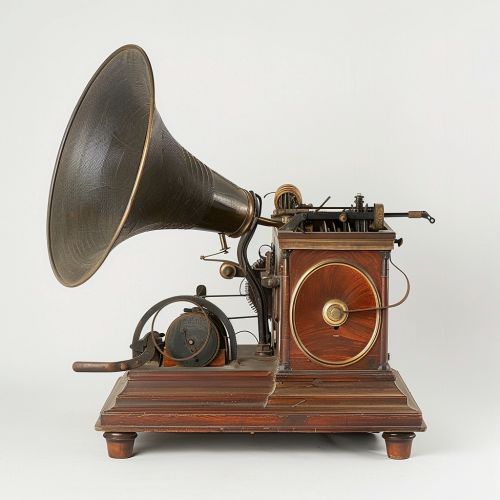Analog recording
Introduction
Analog recording is a technique used for the transformation of audio or video signals into a physical format. Unlike digital recording, which uses binary data to represent information, analog recording encodes the data as continuous signals that mirror the original data. The process involves the modulation of physical properties such as voltage or magnetic fields to capture the information in a medium such as vinyl records or magnetic tapes.
History
The concept of analog recording dates back to the late 19th century with the invention of the phonograph by Thomas Edison in 1877. This marked the beginning of audio recording and playback technology. The phonograph used a mechanical method to record and reproduce sound, which is considered the earliest form of analog recording.

In the early 20th century, magnetic recording was introduced, which utilized magnetic fields to record audio signals. This technology was further developed and refined over the years, leading to the creation of magnetic tape, a medium that became widely used for audio recording during the mid-20th century.
Principles of Analog Recording
Analog recording works by capturing continuous signals from the source and encoding them onto a physical medium. The process involves three main steps: transduction, modulation, and storage.
Transduction
Transduction is the process of converting one form of energy into another. In analog recording, this involves transforming the audio or video signals into an electrical signal through a transducer. For audio signals, this is typically done using a microphone, while for video signals, a camera is used.
Modulation
The electrical signal obtained from the transducer is then modulated to match the recording medium. This is done using a recording head, which alters the physical properties of the medium in accordance to the electrical signal.
Storage
The modulated signal is then stored in the recording medium. The medium can be any material that can hold the modulated signal, such as vinyl for phonograph records or magnetic tape for tape recordings.
Types of Analog Recording
There are several types of analog recording, each with its own unique characteristics and uses. These include mechanical recording, magnetic recording, and optical recording.
Mechanical Recording
Mechanical recording is the earliest form of analog recording, and it involves the direct physical alteration of the recording medium. The most common example of this is the phonograph record, where sound is recorded as a spiral groove on a vinyl disc.
Magnetic Recording
Magnetic recording uses magnetic fields to record data onto a medium. The most common mediums used are magnetic tapes and magnetic discs. This type of recording is widely used in audio and video recording due to its high fidelity and long-term storage capabilities.
Optical Recording
Optical recording uses light to record data onto a medium. This is typically done using a laser, which burns pits into the medium that correspond to the data being recorded. Examples of optical recording include CDs and DVDs.
Advantages and Disadvantages of Analog Recording
Like any technology, analog recording has its advantages and disadvantages. Understanding these can help in making informed decisions about its use.
Advantages
One of the main advantages of analog recording is its high fidelity. Because it captures continuous signals, it can reproduce the nuances and subtleties of the original source with a high degree of accuracy. This makes it popular for music recording, where the quality of sound reproduction is of utmost importance.
Another advantage is its longevity. Analog mediums like vinyl records and magnetic tapes can last for decades if properly stored and maintained.
Disadvantages
One of the main disadvantages of analog recording is its susceptibility to noise and distortion. Because it relies on physical properties to record data, it can be affected by factors such as temperature, humidity, and physical wear and tear.
Another disadvantage is its limited storage capacity. Compared to digital recording, analog recording requires more space to store the same amount of data.
Analog Recording Today
Despite the advent of digital recording, analog recording still holds a significant place in the world of audio and video recording. It is favored by many musicians and audiophiles for its warm sound quality and high fidelity. Moreover, the resurgence of vinyl records in recent years has further cemented the relevance of analog recording in today's digital age.
